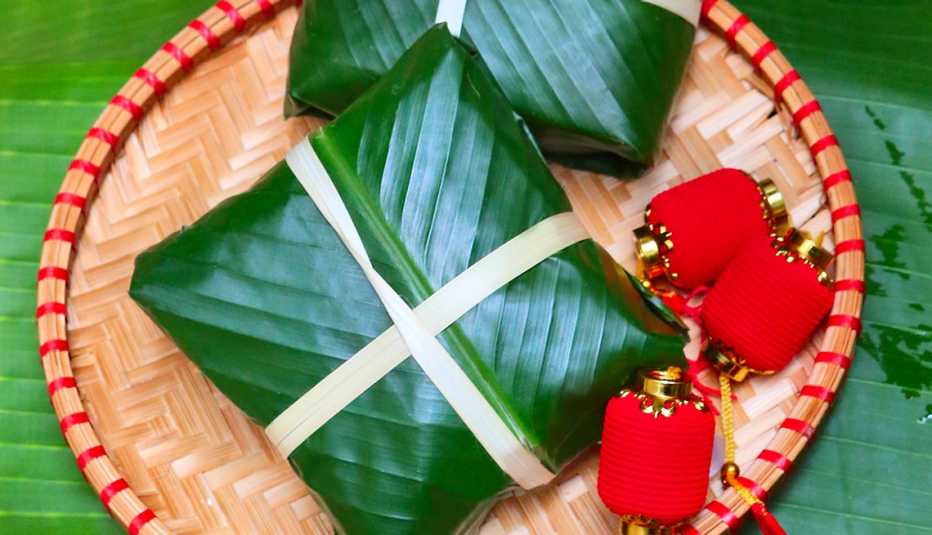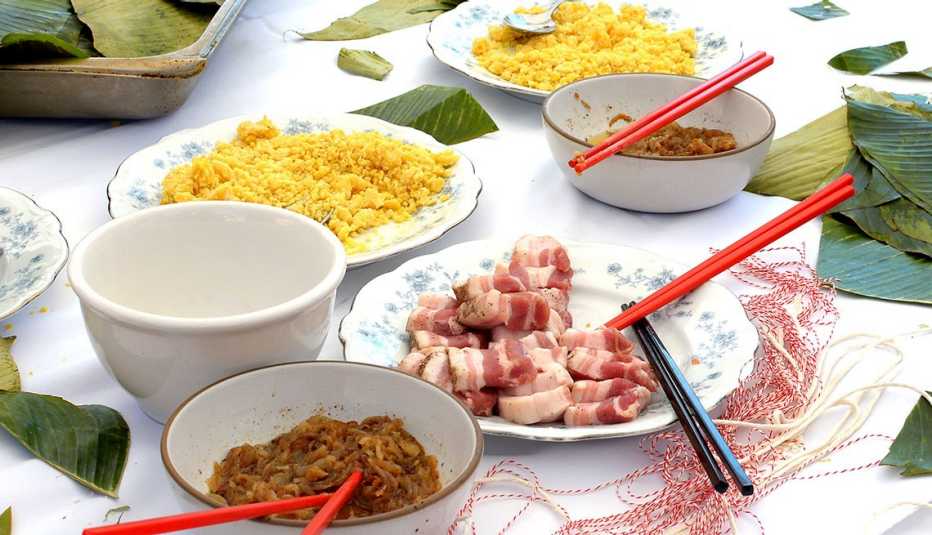AARP Hearing Center


If food has the power to conjure the feelings of a holiday, then a Vietnamese traditional sticky rice treat has all the flavors of the Lunar New Year.
The soul of the Vietnamese Lunar New Year is the square, savory rice cake known as banh chung. The main ingredients are simple: pork belly nestled in a layer of mung beans, encased in sticky rice, then wrapped in leaves. The treat looks like an elegantly wrapped present. But with its savory ingredients, is it accurate to call banh chung a cake?
“It’s really hard,” says Diep Tran, a Los Angeles-based chef, about describing banh chung. Some say it’s closely related to the tamale, but she settles on a description: “I think it’s a dumpling.”
On Feb. 10, many Asian American Pacific Islanders will celebrate the start of the Lunar New Year and usher in the year of the dragon. The holiday is celebrated throughout the world by many different Asian cultures.
In Vietnam, Lunar New Year has its own name — Tet Nguyen Dan or Tet for short — and its own iconic food. Banh chung and its closely related sticky rice treat banh tet are essential foods, says Trần Thị Minh Phước, an author and retired librarian who wrote about the legend of the banh chung in her 2015 book, Vietnamese Children’s Favorite Stories.
“I would say among the foods of Tet, banh tet and banh chung are the must-have rice cakes served in every family during the new year,” Trần Thị Minh Phước, 69, of Minneapolis, says.


To raise the banh chung’s profile in the U.S., Diep Tran, 51, founded the Banh Chung Collective in 2013. This year in its 12th meeting, the collective will hold virtual and in-person cooking classes in San Francisco and Los Angeles, respectively, on Feb. 17. She wants to shift the labor-intensive cooking tradition to a casual experience.
“We can create our own,” says Diep Tran. “And it’s just as valid.”



































































More From AARP
Breaking Barriers, Building Camaraderie in the U.S. Army
Jackson broke stereotypes as a successful Filipina in the military
Devoted to the Art of Chinese Opera
How fundraiser Josephine Ma transforms into the glamorous star of a traditional spectacle
Japanese American Educates Others on History of U.S. Internment Camps
Dennis Kato’s parents were held in camps during World War II but rarely talked about it
Recommended for You